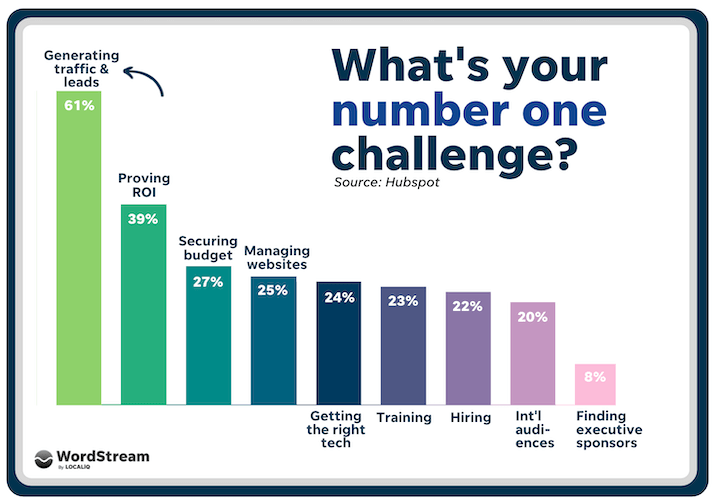Coding for Designers: An Introductory Tutorial for HTML and CSS with Examples: A blog on making websites using HTML and CSS (headings, paragraphs, etc.)
In this introductory tutorial, we covered the basics of HTML and CSS for web development. We started with the structure of an HTML document and covered common elements such as headings, paragraphs, images, and links. We also discussed how to create a navigation menu using unordered lists and list items. Finally, we demonstrated how to style a navigation menu using CSS. This tutorial provides a solid foundation for anyone looking to start learning web development.

As a designer, you may have wondered how to create visually appealing websites and make them function seamlessly. The answer lies in mastering HTML and CSS, the building blocks of web design. In this comprehensive guide, we will walk you through the essentials of web development, including an introduction to HTML and CSS, along with practical examples to help you get started.
Table of Contents
- Introduction to Web Design
- Understanding HTML
- Basic HTML Structure
- Common HTML Elements
- HTML Attributes
- Understanding CSS
- CSS Syntax
- CSS Selectors
- CSS Box Model
- HTML and CSS in Action: Creating a Basic Web Page
- Responsive Web Design
- CSS Frameworks
- Developer Tools and Resources
- SEO Optimization
- Accessibility
- Conclusion
Introduction to Web Design
Web Design is the procedure of making and handling the visible elements of a internet site. It entails a combination of photograph layout, consumer experience (UX) layout, and web development. the 2 primary languages utilized in net design are HTML (Hypertext Markup Language) and CSS (Cascading style Sheets). those languages work together to create the structure and style of internet pages, making sure that they may be each visually appealing and practical.
Understanding HTML
HTML is the backbone of any internet site. It offers the basic shape and content for web pages, such as headings, paragraphs, lists, pictures, and hyperlinks. HTML uses a system of tags or elements to outline those diverse components, making it less complicated for net browsers to interpret and show them.
Basic HTML Structure
An HTML record consists of a chain of elements enclosed inside perspective brackets, < and >. those factors are commonly prepared in a hierarchical shape, with the detail serving as the foundation detail. within the element, you'll find both a and a element. The element contains meta-data approximately the file, together with the identify and character encoding, while the element incorporates the actual content of the internet page.
Here is an example of a simple HTML document structure:
<!DOCTYPE html>
<html>
<head>
<meta charset="UTF-8">
<title>My First Web Page</title>
</head>
<body>
<h1>Welcome to My Web Page</h1>
<p>This is a paragraph of text.</p>
</body>
</html>Common HTML Elements
There are many different HTML elements you can use to create various types of content. Some common elements include:
<h1>to<h6>: Headings, with<h1>being the largest and<h6>the smallest.<p>: Paragraphs.<a>: Links (anchors).<img>: Images.<ul>and<ol>: Unordered (bulleted) and ordered (numbered) lists, respectively.<li>: List items within lists.<table>: Tables.<tr>: Table rows.<td>: Table data cells.
HTML Attributes
HTML elements can have attributes, which provide additional information about the element. Attributes are placed within the opening tag of an element and consist of a name-value pair. Some common attributes include:
id: A unique identifier for an element.class: A class name that can be used to target multiple elements with the same CSS.src: The source URL of an image file (used with<img>elements).href: The destination URL of a link (used with<a>elements).alt: A text description of an image (used with<img>elements).
Understanding CSS
CSS is a language used to control the presentation and formatting of HTML elements. It allows you to apply styles, such as colors, fonts, and spacing, to your web pages. CSS uses a set of rules to determine how styles should be applied to specific elements.
CSS Syntax
A CSS rule consists of a selector and a declaration block. The selector determines which HTML elements the rule applies to, while the declaration block contains one or more declarations, each defining a specific style property and value.
Here is an example of a simple CSS rule:
h1 {
color: red;
font-size: 24px;
}In this example, the selector is h1, which targets all <h1> elements. The declaration block contains two declarations: color: red; and font-size: 24px;. These declarations set the text color of <h1> elements to red and the font size to 24 pixels.
CSS Selectors
CSS selectors are used to target specific HTML elements or groups of elements. There are several types of selectors, including:
- Element selectors: Target elements based on their type (e.g.,
h1,p,img). - Class selectors: Target elements with a specific class attribute (e.g.,
.example-class). - ID selectors: Target an element with a specific ID attribute (e.g.,
#example-id). - Attribute selectors: Target elements with a specific attribute or attribute value (e.g.,
[href],[src="example.jpg"]). - Pseudo-class selectors: Target elements based on their state (e.g.,
:hover,:focus,:checked).
CSS Box Model
The CSS box model is a fundamental concept in web design that describes how the layout and sizing of HTML elements are determined. Each element is represented as a rectangular box, with the content area surrounded by padding, borders, and margins.
- Content area: The area where the actual content of the element is displayed (e.g., text, images).
- Padding: The space between the content area and the border.
- Border: The line that surrounds the content area and padding.
- Margin: The space between the border and other elements.
The box model is important because it helps you understand how to control the size and positioning of elements on your web pages.
HTML and CSS in Action: Creating a Basic Web Page
Now which you have a fundamental know-how of HTML and CSS, let's put them into practice by creating a simple web page.
- Create an HTML file with the following content:
<!DOCTYPE html>
<html>
<head>
<meta charset="UTF-8">
<title>My Web Page</title>
<link rel="stylesheet" href="styles.css">
</head>
<body>
<header>
<h1>Welcome to My Web Page</h1>
</header>
<main>
<p>This is a paragraph of text.</p>
<ul>
<li>Item 1</li>
<li>Item 2</li>
<li>Item 3</li>
</ul>
<img src="example.jpg" alt="Example Image">
</main>
<footer>
<p>Copyright © 2020 My Web Page</p>
</footer>
</body>
</html>- Create a CSS file (named
styles.css) with the following content:
body {
font-family: Arial, sans-serif;
line-height: 1.6;
}
header {
background-color: #f4f4f4;
padding: 20px;
text-align: center;
}
main {
padding: 0 20px;
}
main img {
display: block;
margin: 20px auto;
}
footer {
background-color: #f4f4f4;
padding: 20px;
text-align: center;
}- Open the HTML file in a web browser. You should see a basic web page with a styled header, content, and footer.
Responsive Web Design
Responsive internet design (RWD) is an technique to internet design that ensures web sites appearance and feature nicely on a selection of devices and display screen sizes. RWD involves the use of flexible layouts, fluid grids, and CSS media queries to evolve the layout based totally at the consumer's device.
To make your web page responsive, you can use the following techniques:
- Flexible layouts: Use relative units (e.g., percentages) instead of fixed units (e.g., pixels) for widths and heights.
- Fluid grids: Use CSS grid or flexbox to create flexible, responsive layouts.
- Media queries: Use CSS media queries to apply different styles based on the user's screen size or device type.
CSS Frameworks
CSS frameworks are pre-built libraries of CSS styles and components that can help you quickly create consistent, responsive, and professional-looking websites. Some popular CSS frameworks include:
- Bootstrap: A widely-used, mobile-first CSS framework that includes a comprehensive set of pre-built components and styles.
- Foundation: A responsive, mobile-first CSS framework with a modular design that allows you to pick and choose the components you need.
- Bulma: A modern, lightweight CSS framework based on flexbox that provides a wide range of responsive components and styles.
Using a CSS framework can save you time and effort, but it's important to understand the underlying principles of HTML and CSS to customize and extend the framework to suit your needs.
Developer Tools and Resources
As a web designer, you'll likely encounter challenges and need additional resources to help you develop your skills. Here are some tools and resources to assist you in your web design journey:
- CodePen: An online code editor and community where you can create, share, and explore HTML, CSS, and JavaScript projects.
- MDN Web Docs: A comprehensive resource for web developers, including documentation, guides, and tutorials on HTML, CSS, JavaScript, and more.
- W3Schools: An extensive collection of tutorials, references, and examples for web development topics, including HTML, CSS, JavaScript, and more.
SEO Optimization
Search engine optimization (SEO) is an essential aspect of web design, as it helps to improve your website's visibility on search engines. To optimize your website for SEO, consider the following practices:
- Use descriptive, keyword-rich titles and headings.
- Include relevant meta tags, such as the description and keywords.
- Optimize your images by using descriptive file names, alt text, and proper sizing.
- Structure your content using semantic HTML elements, such as headings, paragraphs, lists, and tables.
- Make your website responsive and mobile-friendly.
- Improve page load times by optimizing images, minifying CSS and JavaScript, and using a content delivery network (CDN).
Accessibility
Accessibility is the exercise of creating your web sites usable by as many human beings as possible, consisting of people with disabilities. reachable net design ensures that your content is to be had to a much wider variety of customers, which could enhance user experience and search engine optimization. To create on hand web sites, recollect the subsequent suggestions:
- Use semantic HTML elements to provide a meaningful structure for your content.
- Ensure your text is easily readable, with sufficient contrast and font sizes.
- Provide alternative text for images, and use descriptive link text.
- Make your website navigable using a keyboard, and include skip links for screen reader users.
- Use ARIA (Accessible Rich Internet Applications) attributes to enhance the accessibility of dynamic content and user interface components.
Conclusion
Learning HTML and CSS is the first step towards becoming a skilled web designer. By mastering these languages, you can create visually appealing and functional websites that provide a great user experience. In addition, understanding responsive web design, SEO optimization, and accessibility will ensure your websites are optimized for both users and search engines. With practice and dedication, you can become a proficient web designer and create beautiful, engaging websites that stand out in today's digital landscape.
What's Your Reaction?


















![Canva Tutorial For Beginners | How to Use Canva Like PRO [FREE] | Canva Full Course](https://img.youtube.com/vi/yWJp7gQqCQ8/maxresdefault.jpg)


